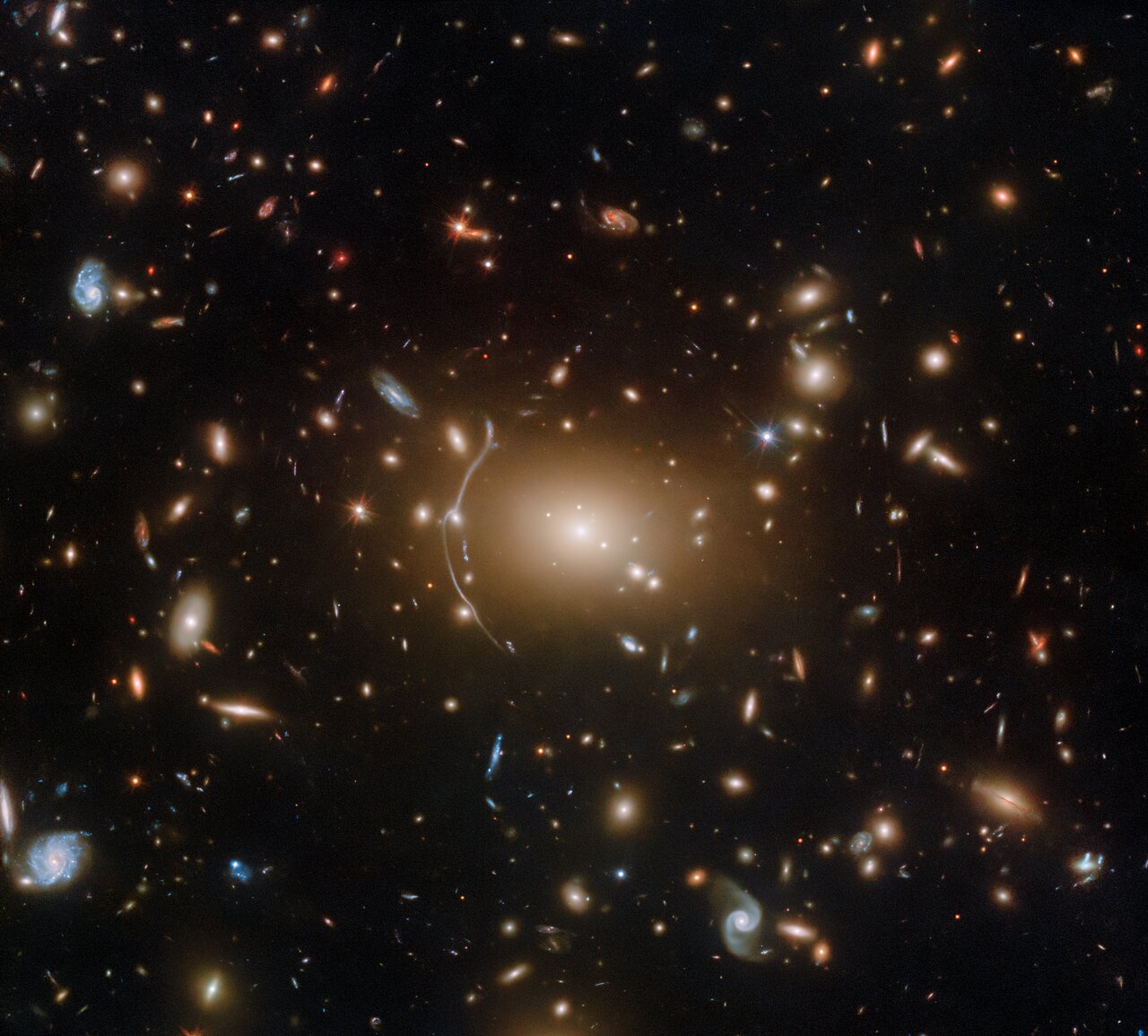Hubble celebrates Halloween with this inky image of a cosmic cobweb

The NASA/ESA Hubble Space Telescope is celebrating Halloween with this inky image of Abell 611, a cobweb of galaxies held together by a dark secret. Located over 1000 megaparsecs or roughly 3.2 billion light-years from Earth, this galaxy cluster is a popular target for investigating the dark matter - one of the most mysterious and elusive quantities in the universe - owing to the abundant evidence of gravitational lensing visible within the cluster.
According to NASA, a gravitational lens can occur when a huge amount of matter, such as a galaxy cluster, creates a gravitational field that distorts and magnifies the light from distant galaxies that are behind it but in the same line of sight.
The phenomenon allows researchers to study the details of early galaxies too far away to be seen with current technology and telescopes.
An example of gravitational lensing is perhaps most clearly visible in the centre of this Hubble image, to the left of the cluster's glowing core, where a curve of light can be seen. This curve is light from a more distant source that has been bent and distorted (or ‘lensed’) by Abell 611's vast mass.
According to the European Space Agency, most dark matter candidates fall into one of two categories:
- some type of particle that exists in vast quantities throughout the Universe, but for some reason does not interact with light as other particles do, or
- some type of massive object that also exists in great abundance throughout the Universe, but does not lend itself to detection using current telescope technology.
Two of the most whimsically named dark matter candidates fall into the first and second categories respectively.
The mystery of what holds the cosmic cobweb of galaxies within Abell 611 together remains unsolved.
"Like all galaxy clusters, the continued existence of Abell 611 poses a mystery to astronomers. Specifically, there does not appear to be enough mass contained within its web of rapidly rotating constituent galaxies to prevent the cluster from flying apart," ESA wrote in a blog.










